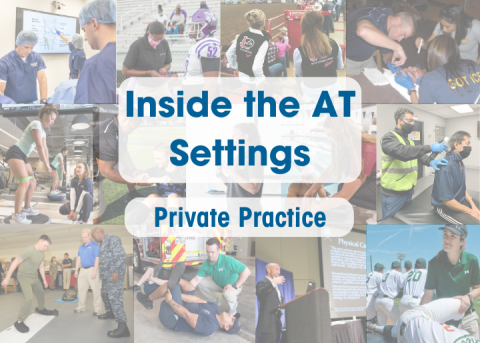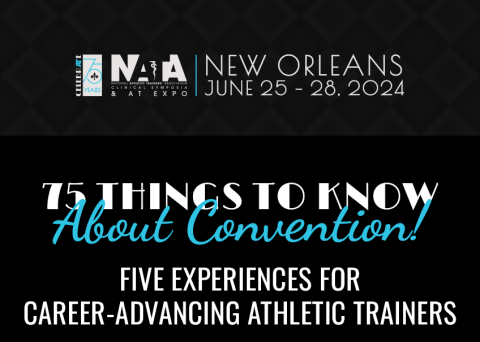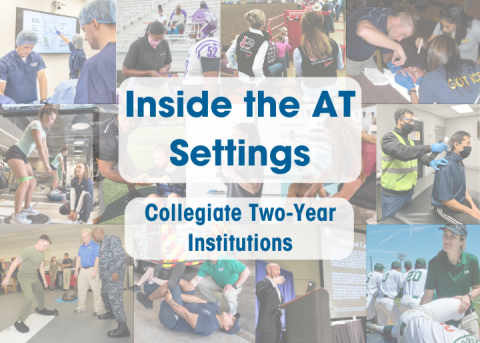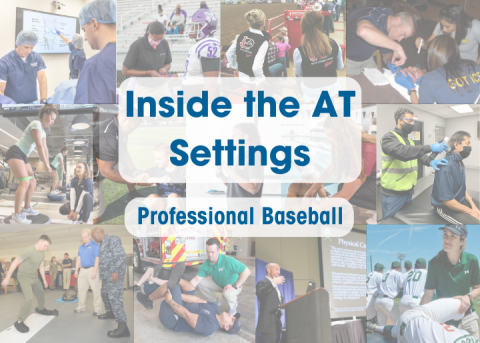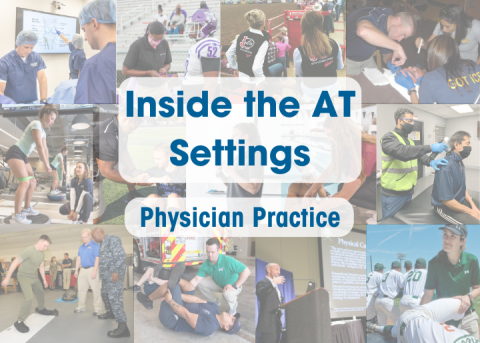
“From Head to Toe” isn’t just the theme of National Athletic Training Month this year; it’s words Jeff Timlin, DAT, LAT, ATC, lives by every day as an athletic trainer in the armed forces setting.
“[Working with airmen] made me upgrade my perspective on whole-person health care,” said Timlin, an athletic trainer with the 67th Fighter Squadron of the U.S. Air Force, contracted through the LMR Technical Group. “I always call them professional sitters because they have to be super strong in that position, head to toe, and they also have to rotate constantly – look behind them, look left, look right – all while under these gravitational forces.”
Originally from Pennsylvania, Timlin began his athletic training career as a summer intern with the Philadelphia Eagles in 2015. In addition to the professional sports setting, he worked in the secondary school and higher education settings before bringing his skill set to the armed forces.
“I’ve always wanted to work with the military setting,” he said. “In the military, people join to help make the world a better place.”
Timlin heard about the AT position with LMR Technical Group through his fellow California University of Pennsylvania alum, Whitney Lee, MS, ATC, PES. He jumped at the opportunity and, in November 2020, moved to the other side of the world.
For the past three-plus years, Timlin has been stationed at Kadena Air Force Base in Okinawa, Japan. As the first two athletic trainers stationed with the 44th and 67th squadrons, Timlin and Lee were able to build their athletic training facility to their liking, ensuring they had everything they needed to care for all squadron personnel, including enlisted servicemembers and officers. Another step to getting up and running was seeing firsthand what the airmen experience during their approximately 14-hour workdays.
“I flew in the backseat of the F15 and got to fly a little bit, too,” Timlin said. “The primary reason they let us go was because it would help us understand what it feels like to go under G-forces past roller coaster levels. I got up to 8.2. At that point, you see gravity, essentially. It's just dark, and everything on your face, like the oxygen mask, is just dragged and pulled straight down.”
Armed with this firsthand knowledge, Timlin said he “looked outside the box” to address the physical toll such extreme G-forces can have on airmen. This ranges from preventing blackouts by teaching breathing techniques, such as the anti-G straining maneuver, to increasing range of motion to reduce musculoskeletal injuries.
“One of the highlights is that I get to combine athlete training and a little bit of sports performance,” he said. “I fix the injury issues and identify the things that are causing them. Then, once those start to fade into the distance, we take it to the next level and look further down the spine, the hips, the shoulders and challenge the body in different ways. It’s all about how well you can maintain good posture and then move. [Working with airmen] has allowed me to expand my wealth of knowledge into this orthopedic specialty.”
Through this head-to-toe care Timlin provides, injured servicemembers have been able to return to physical activities quicker, which is a boon as most participate in sports during their free time.
“Not only do I take care of their professional career, but I take care of their recreational career as well,” he said. “We’ve had injuries that have stopped them from flying for months. When that happens, you have to reengage and relearn how to move and learn how to control these forces on a bilateral level because the more effective your body is, the less stress that occurs.”
Growing his understanding of the human body isn’t the only benefit Timlin has experienced during his time caring for servicemembers. He has also been welcomed into their tight-knit community.
“They trust me to take care of their health-based decisions, whether it's exercise, whether it's better modalities or doing stuff to make better nutritional choices,” he said. “You never know how much impact you can have on a population when you not only get their respect but also show you care.”

